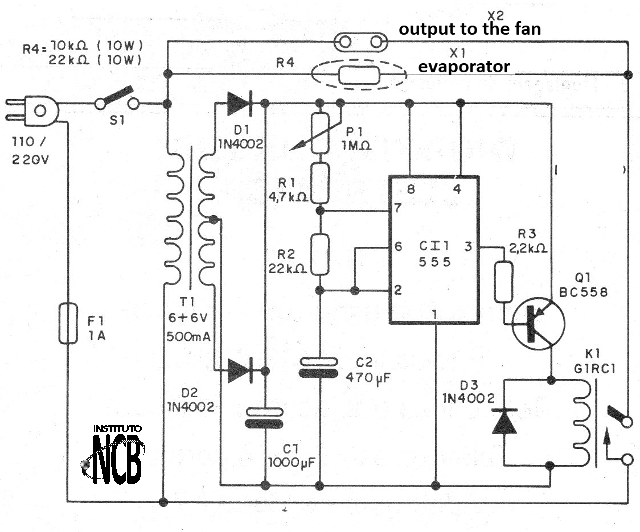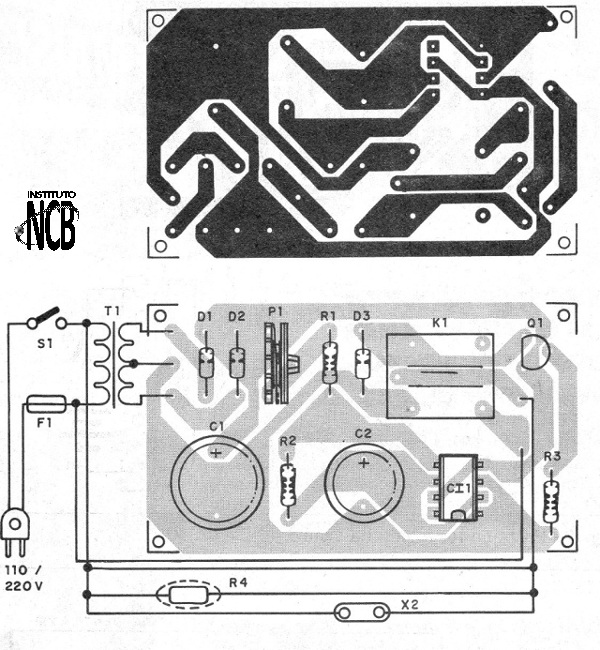The idea behind this circuit is to show that the "smell" effects of Professor Ventura's Multimedia Theater story can be realized in practice (see Prof. Ventura on the site) The circuit consists of a small timer that triggers a relay at regular intervals for a few seconds, long enough to heat a wire resistor around which there is a wick that remains wet with aromatic essence.
Thus, in the activation, the essence evaporates spreading its aroma by the environment. The drive ranges are set at P1 and R2 determines the heating time of the wire resistor.
The base of the circuit is an astável with the 555 that drives a relay through a transistor. In figure 1 we have the complete diagram of the apparatus.

The printed circuit board for the assembly is given in figure 2.

On assembly, note the position of the integrated circuit and transistor. The transformer has 12 + 12 V secondary with currents between 500 mA and 800 mA and the diodes admit equivalent.
The resistors are 1/8 W with any tolerance except X1 that has 10k x 10W if the network is 110V and 22k x 10W if the network is 220V, being the type of wire. If heating is insufficient for good evaporation, try 5 W resistors.
The one wick of fabric is wrapped around the resistor and has its tip threaded into a jar with essence. Never use essences that contain alcohol and can become inflamed.
CI-1 - 555 - integrated circuit
Q1- BC558 - general purpose PNP transistor
D1, D2, D3 - 1N4002 or 1N4004 - rectifier diodes
K1 - 12 V relay with 50 or 100 mA base DIL
T1 - Transformer - see text
F1 - 500 mA at 1 A- fuse
S1 – On/Off switch
C1 - 1000 uF x 25 V - electrolytic capacitor
C2 - 470 uF x 16 V - electrolytic capacitor
P1 - 1 M ohm - trimpot
R1 - 4k7 ohm - resistor - yellow, violet, red
R2 - 22 k ohm - resistor - red, red, orange
R3 - 2k2 ohm - resistor - red, red, red
Several:
Printed circuit board, mounting box, power cable, material for the evaporator system, fuse holder, wires, solder, etc.



